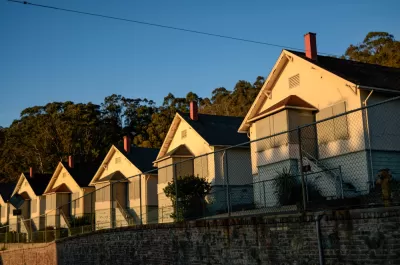As community land trusts take root and expand, they face numerous questions on how to stay communally-focused while their geographic scope grows.

"Community control" has as many meanings as "scale"—and as many meanings as "community." The baseline under it all is that properties have been permanently removed from the speculative market with their use to be determined for the good of a community, rather than for profit.
But that simple definition would also encompass publicly owned land and all nonprofit-owned land (not subject to Low Income Housing Tax Credit investor control). Typically, the intention of a CLT is for community control to go deeper than changing the name on the deed, aiming for something more like democratic control within their organization.
A classic CLT is a membership organization with members drawn from its service area. One-third of the board are CLT residents, elected by other CLT residents; one-third are community residents, elected by the members; with the remaining one-third being public representatives of other stakeholders, whether elected officials or professionals who support the mission. This is what makes a CLT different from a standard housing nonprofit, which may have a resident on the board, but rarely a majority, says Zach Murray, a CLT consultant who formerly worked for Grounded Solutions Network and the Oakland Community Land Trust (Oak CLT) in Oakland, California. "The democracy component is what separates the CLT from a traditional CDC, or even a housing authority," Murray says.
We’re creating space in the leadership of an organization for residents and for community members …. In housing, it’s really important that folks have a say in the communities that they live in. It’s different than just having a resident council or resident adviser group, actually having folks at the table to know the full extent of the operations of the organization.
When a CLT grows, the "community" in question can become more difficult to define. But to some extent it always was.
FULL STORY: Keeping Community Control as Community Land Trusts Grow

Alabama: Trump Terminates Settlements for Black Communities Harmed By Raw Sewage
Trump deemed the landmark civil rights agreement “illegal DEI and environmental justice policy.”

Planetizen Federal Action Tracker
A weekly monitor of how Trump’s orders and actions are impacting planners and planning in America.

The 120 Year Old Tiny Home Villages That Sheltered San Francisco’s Earthquake Refugees
More than a century ago, San Francisco mobilized to house thousands of residents displaced by the 1906 earthquake. Could their strategy offer a model for the present?

In Both Crashes and Crime, Public Transportation is Far Safer than Driving
Contrary to popular assumptions, public transportation has far lower crash and crime rates than automobile travel. For safer communities, improve and encourage transit travel.

Report: Zoning Reforms Should Complement Nashville’s Ambitious Transit Plan
Without reform, restrictive zoning codes will limit the impact of the city’s planned transit expansion and could exclude some of the residents who depend on transit the most.

Judge Orders Release of Frozen IRA, IIJA Funding
The decision is a victory for environmental groups who charged that freezing funds for critical infrastructure and disaster response programs caused “real and irreparable harm” to communities.
Urban Design for Planners 1: Software Tools
This six-course series explores essential urban design concepts using open source software and equips planners with the tools they need to participate fully in the urban design process.
Planning for Universal Design
Learn the tools for implementing Universal Design in planning regulations.
Clanton & Associates, Inc.
Jessamine County Fiscal Court
Institute for Housing and Urban Development Studies (IHS)
City of Grandview
Harvard GSD Executive Education
Toledo-Lucas County Plan Commissions
Salt Lake City
NYU Wagner Graduate School of Public Service




























